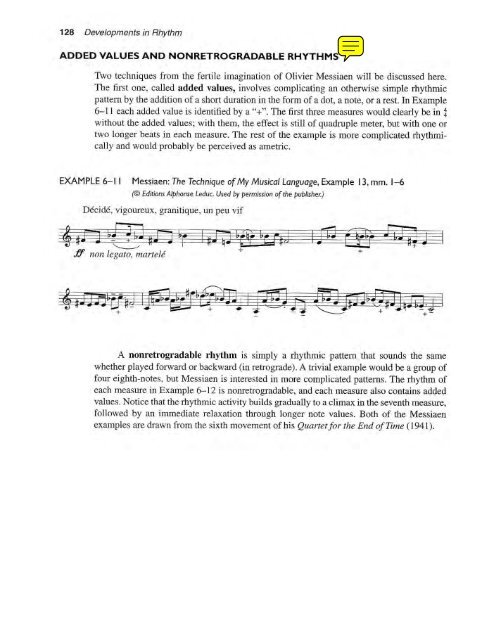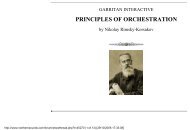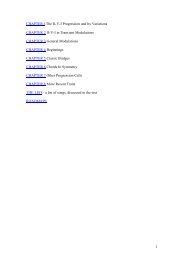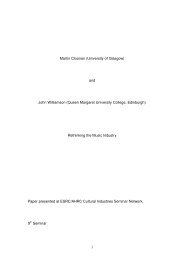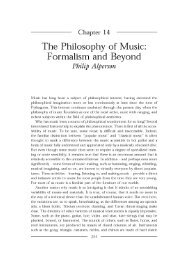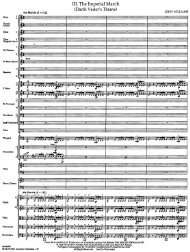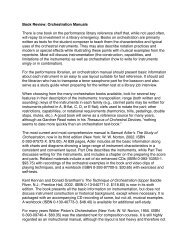TWENTIETH- - Synapse Music
TWENTIETH- - Synapse Music
TWENTIETH- - Synapse Music
You also want an ePaper? Increase the reach of your titles
YUMPU automatically turns print PDFs into web optimized ePapers that Google loves.
128 Developments in Rhythm<br />
ADDED VALUES AND NONRETROGRADABLE RHYTHMS<br />
Two techniques from the fertile imagination of Olivier Messiaen will be discussed here.<br />
The first one, called added values, involves complicating an otherwise simple rhythmic<br />
pattern by the addition of a short duration in the form of a dot, a note, or a rest. In Example<br />
6-11 each added value is identified by a "+". The first three measures would clearl y be in l<br />
without the added values; with them, the effect is still of quadruple meter, but with one or<br />
two longer beats in each measure. The rest of the example is more complicated rhythmically<br />
and would probably be perceived as ametric.<br />
EXAMPLE 6-11 Messiaen: The Techniqu e of My <strong>Music</strong>ol Language, Example 13, mm. 1- 6<br />
(© Editions Alphonse Leduc. Used by permission of the publisher.)<br />
Decide, vigoureux, granitique, un peu vif<br />
ff non legato, marteM<br />
+ +<br />
A nonretrogradable rhythm is simply a rhythmic pattern that sounds the same<br />
whether played forward or backward (in retrograde). A trivial example would be a group of<br />
four eighth-notes, but Messiaen is interested in more complicated patterns. The rhythm of<br />
each measure in Example 6--12 is nonretrogradable, and each measure also contains added<br />
values. Notice that the rhythmic activity builds gradually to a climax in the seventh measure.<br />
fo llowed by an immediate relaxation through longer note values. Both of the Messiaen<br />
examples are drawn from the sixth movement of his Quartet/or the End a/Time ( 1941).


